Bringing home a new puppy or kitten is such a joy, but it’s a big change for both you and your furry friend. A little planning can make a huge difference in helping your new pet settle in happily and safely. When I first brought home my little kitten and a cute, energetic puppy, I had no idea how much there was to consider. It was all about making them feel comfortable, safe, and loved in this new environment. Let’s go through the essential steps together to create a welcoming home where your new puppy or kitten can thrive.
-
Essential Supplies for a New Pet
Before your new friend arrives, gather the basics. Here’s a quick checklist:
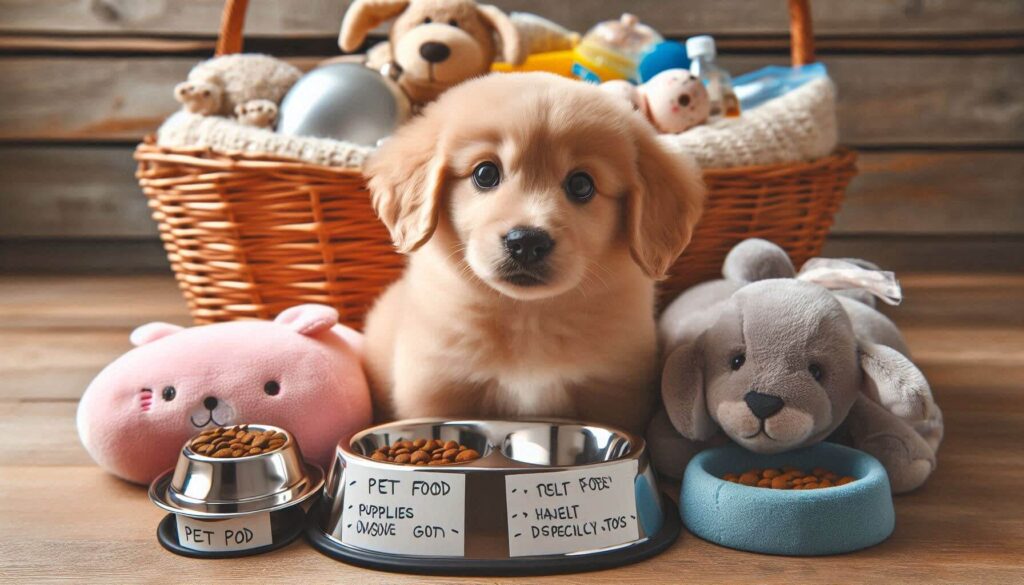
- Food and water bowls: Go for stainless steel or ceramic options—they’re durable and easy to clean.
- Pet food: Make sure you have age-specific food. Young pets need specific nutrients to grow strong.
- Bedding: Find a cozy, soft bed where they can feel secure and rest well.
- Toys: Opt for age-appropriate toys. Puppies love to chew toys, and kittens often go wild for feather wands or small balls.
- Collar and leash (for puppies): An adjustable collar with a secure leash is essential.
- Litter box (for kittens): A good litter box and scoopable litter will make life cleaner and easier for you both.
Having these items ready will make the first few days much smoother.
-
Pet-Proofing Your Home
Pets, especially young ones, are naturally curious. To keep them safe, do a quick scan for hazards and make adjustments.
| Hazard | Solution |
| Electrical cords | Secure them behind furniture or use cord covers |
| Small objects | Keep tiny items out of reach to avoid choking |
| Toxic plants | Remove or relocate plants like lilies, pothos, or aloe |
| Medications & Chemicals | Store in high cabinets with childproof latches |
| Dangerous rooms | Use baby gates to block access where needed |
By pet-proofing your home, you’ll prevent accidents and help your pet feel safe as they explore.
-
Creating a Safe Space for Adjustment
When they first arrive, your new pet will need a quiet, cozy spot to settle in. This could be a specific room or a designated “calm zone” in a corner.
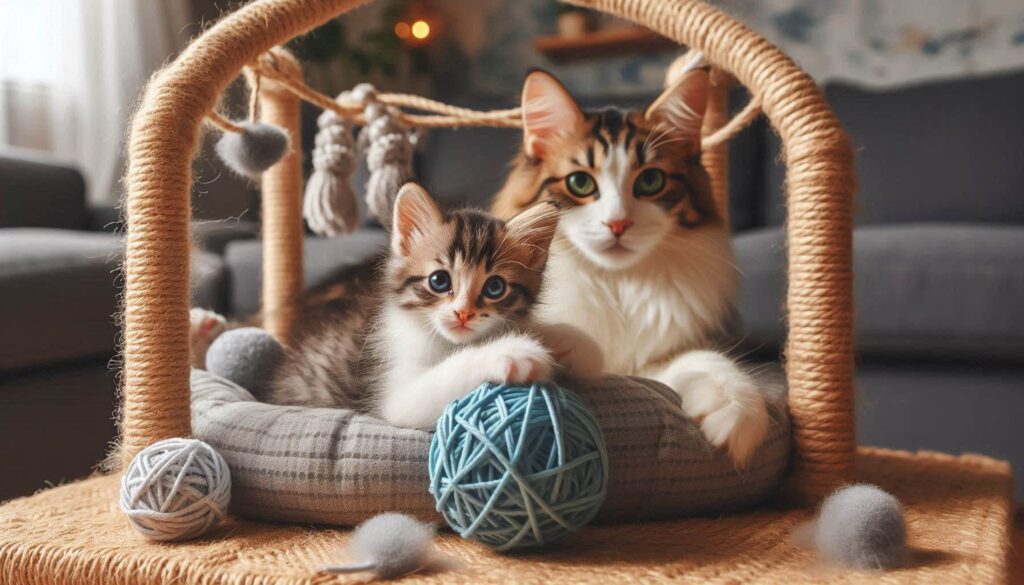
- For Puppies: Set up a small space with a bed, toys, and access to water. If crate training, place a cozy blanket in the crate and make it as inviting as possible.
- For Kittens: Make sure they have access to a litter box, water, and a few toys. Keep the area quiet so they can get used to their surroundings without feeling overwhelmed.
This safe space helps them gradually adjust to their new home at their own pace.
-
First 48 Hours: What to Expect
The first couple of days can be a bit nerve-wracking for your new pet, so here’s what you can do to help them feel at ease:
- Separation Anxiety: Your pet might feel lonely or anxious, especially at night. A ticking clock or a soft blanket can be soothing for puppies. Kittens often benefit from a soft, warm bed.
- Comfort and Calm: Limit introductions to other family members and pets initially. Give them time to adjust before exploring the rest of the house.
These early days set the tone, so patience and gentle care will go a long way.
-
Introducing Your Pet to Other Animals
Introducing a new puppy or kitten to existing pets requires a gentle approach. Start slow and be observant of both the new pet and any resident animals.
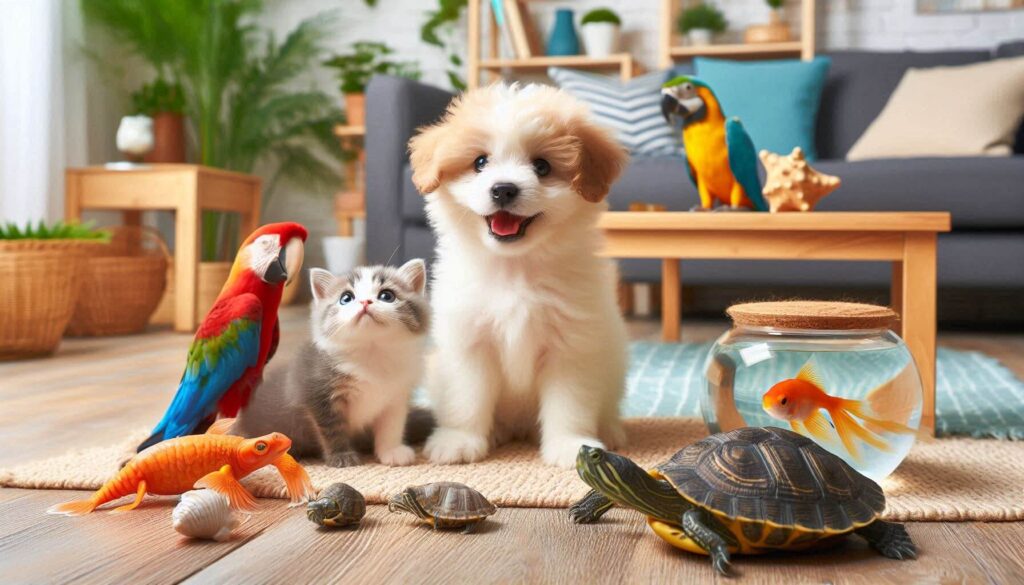
Step-by-Step Introduction
- Let them sniff each other’s scent first: Use a blanket or toy from each pet’s area.
- Brief visual introductions: Keep the meeting short and on neutral ground.
- Observe body language: Watch for positive signs like relaxed postures or cautious interest, and be mindful of warning signs like growling or hissing.
| Positive Signs | Warning Signs |
| Relaxed posture | Growling or raised fur |
| Sniffing calmly | Backing away or hiding |
| Slow tail wag (puppies) | Ears flattened, tense body |
Being patient and respecting each pet’s comfort level will make for smoother introductions.
-
Feeding Your Puppy or Kitten
Your new pet’s diet is a major part of their health and growth. Here’s how to set up feeding right from the start:
- Puppies: Feed them high-quality puppy food specific to their breed and size. Young puppies usually need 3–4 small meals a day.
- Kittens: Choose kitten food that supports growth and development. They may also need smaller, more frequent meals.
If your pet is a picky eater or seems unsure about food, try offering it in a quiet area where they feel safe, and keep a consistent feeding schedule to help them adjust.
-
Establishing a Routine
A steady routine helps your new pet feel secure. Aim to keep regular times for these activities:
- Feeding: Stick to consistent times, so they know when to expect food.
- Bathroom breaks: For puppies, this means potty training, while kittens will need a clean litter box in the same spot.
- Play and training: Daily playtime is crucial for their physical and mental stimulation.
Routines make it easier to train your pet and create a sense of stability, which helps them settle in faster.
-
Basic Training Steps
Every pet needs a little training to adjust to their new life with you. Here’s a quick start guide:
- For Puppies: Begin with potty training by taking them outside at regular intervals, especially after meals. Crate training helps with both potty training and giving your puppy a safe space to relax.
- For Kittens: Start with litter box training—most kittens take to it naturally, but placing them in the box after meals helps reinforce the habit. Encourage scratching post use to save your furniture.
Positive Reinforcement Tips: Reward good behavior with treats or affection. Consistent praise reinforces learning in a gentle, effective way.
-
Vet Visits and Health Essentials
A trip to the vet is essential for keeping your new puppy or kitten healthy. Here’s a basic checklist for that first visit:
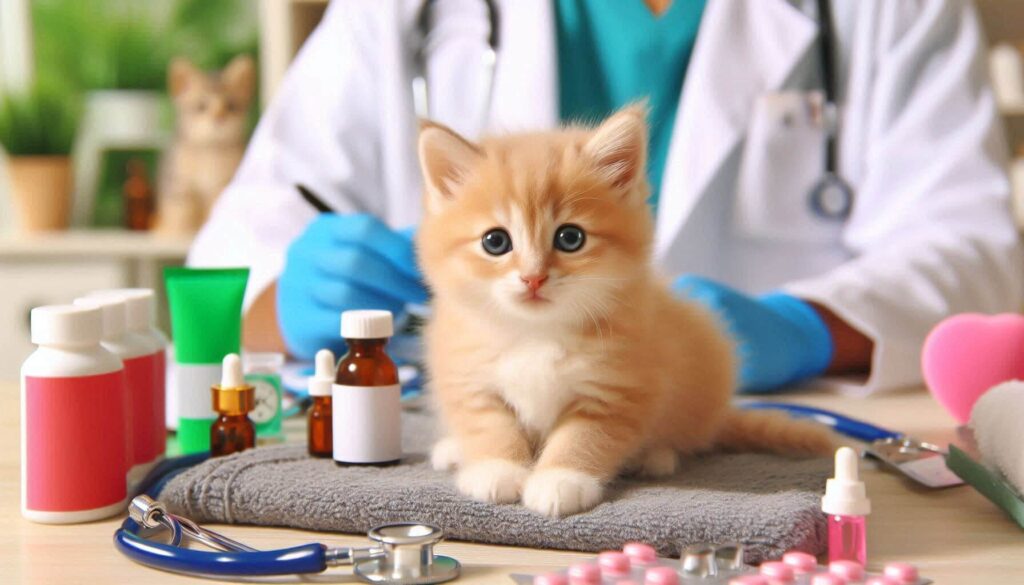
- Vaccinations: Keep up with age-specific vaccines to prevent common illnesses.
- Flea and Tick Treatment: Discuss options for safe, ongoing treatment to protect your pet.
| Puppy Vaccinations | Kitten Vaccinations |
| Distemper, Parvovirus, Rabies | Feline Leukemia, Calicivirus, Rabies |
| Starts around 6-8 weeks | Begins around 6-8 weeks |
Planning these visits early helps catch any health issues and establish a preventative care routine.
-
Socialization Techniques
Socializing your pet early helps them grow into well-rounded, confident companions.
- New Environments: Gradually introduce your pet to different rooms and outdoor settings.
- Handling Tips: Regular gentle handling helps pets become comfortable with grooming and vet check-ups. Puppies may need gentle introductions to loud noises, while kittens benefit from gradual social exposure to people and other pets.
Building these experiences over time boosts their confidence and ease in unfamiliar settings.
-
Safe Toys and Playtime
Play is vital for development, and having the right toys can enrich your pet’s life.
- Age-Appropriate Toys: Puppies love to chew toys that satisfy their urge to nibble, while kittens enjoy toys like feather wands and balls.
- Interactive Play Ideas: Try treat-dispensing toys for puppies or puzzle toys for kittens to stimulate their minds and keep them busy.
Playing with your pet strengthens your bond and keeps them active and happy.
-
Managing Pet Behavior (Chewing, Scratching, etc.)
It’s normal for young pets to chew, scratch, or get into things they shouldn’t. Here are some ways to guide them:
- Redirect Unwanted Behaviors: Gently guide your pet toward appropriate behaviors. If they’re chewing something off-limits, swap it with a chew toy.
- Behavior Alternatives: Keep a variety of toys or scratching posts nearby.
By teaching alternatives and using positive reinforcement, you’ll create good habits that will last a lifetime.
-
Handling Bathing and Grooming
Regular grooming helps keep your pet looking and feeling their best.
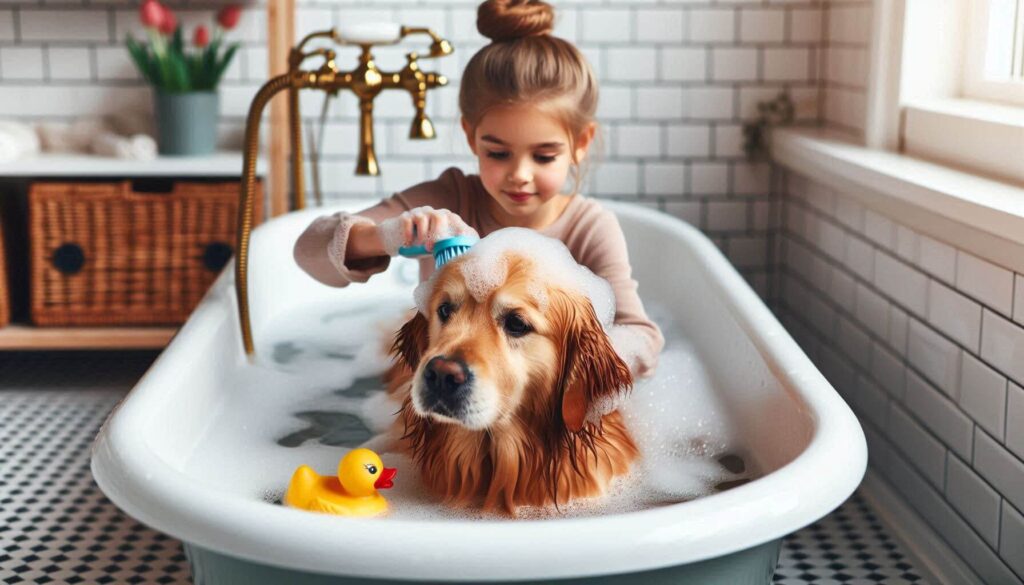
- Frequency Recommendations: Puppies generally need baths every month, while kittens may only need occasional wipes or grooming.
- Basic Grooming Tools: For puppies, consider a pet-safe shampoo and brush. For kittens, a soft-bristled brush helps reduce shedding and keep their fur smooth.
Gentle, gradual grooming helps pets relax and get used to the process.
-
Creating a Pet Care Schedule
A consistent schedule helps establish routines and supports their development.
| Time | Activity | Notes |
| Morning | Feeding, bathroom, play | Consistent timing builds comfort |
| Midday | Short play or training session | Keeps energy balanced |
| Evening | Feeding, bathroom, grooming | Sets up a peaceful bedtime routine |
Adjust based on your pet’s age and needs; young pets may need more frequent bathroom breaks and meals.
-
Emergency Preparation
It’s important to be ready for any unexpected situations that might come up with a new pet. Start by securing any harmful items, like cleaning products, electrical cords, or sharp objects, in places your puppy or kitten can’t reach. Have emergency contacts ready, such as the local vet’s number and a nearby animal hospital in case of after-hours issues. Additionally, create a basic pet first-aid kit with essentials like bandages, antiseptic wipes, and a pet thermometer.
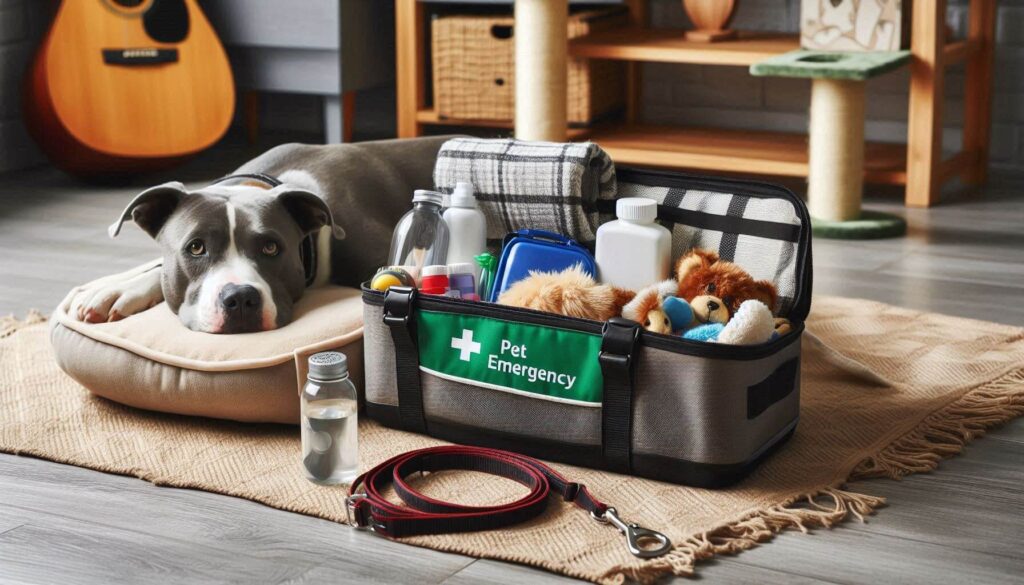
Having these tools at hand provides peace of mind and keeps you prepared for the unexpected.
-
Microchipping and Identification
One of the best ways to ensure your pet’s safety is through proper identification. Microchipping is a reliable way to help locate a pet if it gets lost and is usually a quick, low-pain procedure done at the vet. In addition to microchipping, consider a collar with an ID tag for puppies. This tag should include your phone number and address to help bring your pet home safely. A combination of microchipping and collar ID can help reunite you with your pet if they ever wander too far.
-
Using Positive Reinforcement in Training
Training with positive reinforcement can make a big difference in helping your pet learn essential behaviors. Celebrate small milestones, like successful potty training or obeying basic commands, with rewards. Treats work well, but even a simple “good job!” and a belly rub can make your pet feel special. Over time, these positive reinforcements encourage them to repeat good behaviors. Avoid harsh corrections, as positive training builds trust, making your pet more responsive and eager to please.
Considering pet insurance or setting aside an emergency fund can offer financial support when your pet needs medical care. Pet insurance can cover a portion of vet visits, medications, and even emergency procedures, which can be costly. If insurance isn’t an option, try building a small emergency fund specifically for pet care. Start small and add regularly, so you’re ready for any health issues without financial stress. Preparing ahead ensures you can give your new family member the care they deserve without hesitation.
-
Encouraging Healthy Sleeping Habits
Creating a comfortable sleep environment will help your pet rest well and feel secure. Set up a designated sleeping area with cozy bedding in a calm, low-traffic area. Puppies and kittens may feel anxious during their first few nights; comforting them with soft blankets or a warm water bottle can mimic the feeling of their littermates. Consistent bedtime routines, like short walks for puppies or quiet play for kittens, will signal that it’s time to wind down, helping them adjust to a sleep schedule.
-
Pet Parents Experience, Advice & Tips
“When I brought home my kitten, Luna, I didn’t expect how anxious she would be on her first night. She cried a lot, and I felt so helpless! I learned that setting up a small, cozy area for her, with a blanket and her favorite toy, really helped her settle down. Now, I suggest all new pet owners create a little ‘safe spot’ for their pets, so they can adjust gradually to their new home without feeling overwhelmed.” – Sarah, Caring kitten lover.
“Establishing a routine was a game-changer with my puppy, Max. At first, he was all over the place, but once I started feeding and walking him at the same times every day, he became much calmer and easier to train. Now, Max knows what to expect, and I’d say having a schedule makes a big difference—especially for new puppy owners!” – Jake, first-time puppy owner.
“When we adopted Coco, our puppy, we were nervous about introducing her to new people and environments. We started slowly by inviting friends over to meet her, giving her treats and praise every time she interacted calmly. Gradually, she became more confident around people and in new places. My advice is to let them go at their own pace. Every pet is different, so respect their comfort level and build up from there.” – Emma, an experienced pet parent.
-
Final Checklist and Summary
To wrap up, preparing your home for a new puppy or kitten can be a wonderful experience with the right steps in place. From gathering supplies and creating safe spaces to establishing routines and preparing for emergencies, each step helps you and your pet transition smoothly. Remember, patience and understanding are key as they adjust to their new surroundings. With love, care, and these essential preparations, your home will soon be a place of comfort and happiness for your new furry friend. Enjoy the journey!
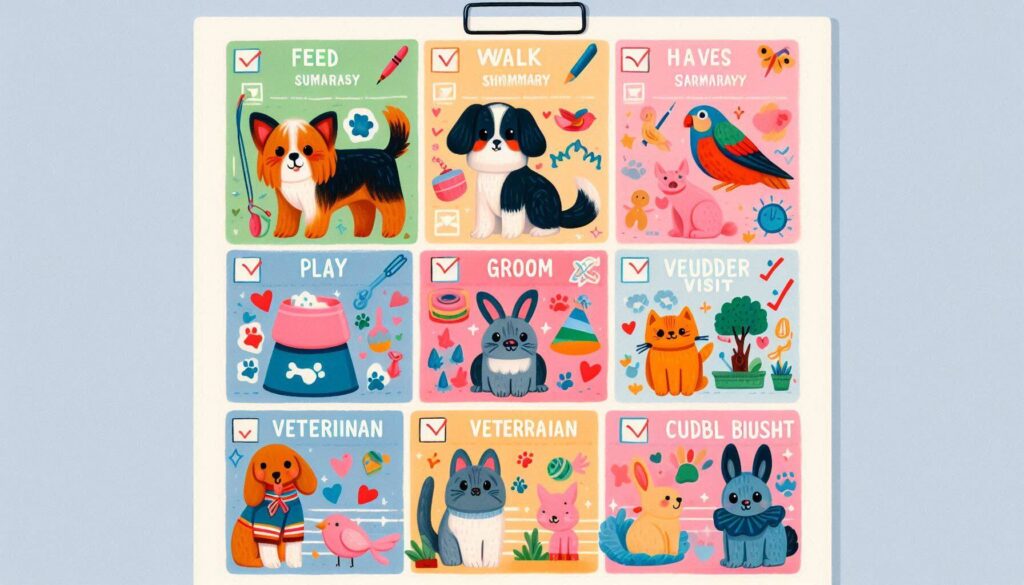
FAQs
- What should I buy before bringing a puppy or kitten home?
Essential items include food and water bowls, bedding, toys, litter boxes (for kittens), a crate (for puppies), and grooming supplies. - How do I pet-proof my home for a new puppy or kitten?
Pet-proof by securing electrical cords, removing small objects that could be swallowed, locking away toxic plants, and ensuring cleaning products are stored safely. - Where should a new puppy or kitten sleep?
Create a calm, cozy sleeping area in a low-traffic part of your home to help them feel secure and encourage healthy sleep habits. - How do I help my puppy or kitten adjust to a new environment?
Give them time to explore at their own pace, provide a safe “home base,” and keep their space calm and predictable in the beginning. - What are the first things I should teach a new puppy or kitten?
For puppies, start with potty training and crate training. For kittens, focus on litter box use and scratching post-training. - How do I introduce a new pet to existing pets?
Use a gradual approach, introducing them to neutral spaces and monitoring interactions closely for any signs of stress or aggression. - How often should I feed my puppy or kitten?
Young puppies and kittens typically need to eat three to four times daily. Consult with your vet for age-appropriate feeding schedules. - What foods should I avoid giving my new puppy or kitten?
Avoid feeding chocolate, caffeine, alcohol, onions, garlic, and certain human foods that are toxic to pets. Stick with age-appropriate pet food. - When should I take my puppy or kitten to the vet?
Schedule an initial vet checkup within the first week. Your vet will create a vaccination schedule and address any health concerns. - How can I manage nighttime anxiety in a new puppy or kitten?
Provide a warm, comforting space for sleeping and avoid too much stimulation before bedtime to encourage a calm night’s sleep. - How do I handle unwanted behaviors like chewing or scratching?
Redirect to appropriate items, such as chew toys for puppies and scratching posts for kittens, to discourage unwanted behaviors. - What vaccinations does my puppy or kitten need?
Core vaccines include rabies and distemper. Your vet can provide a full schedule based on age and lifestyle. - Do I need pet insurance for a new puppy or kitten?
While optional, pet insurance can cover unexpected vet bills and is often a good investment for new pet owners. - How can I make sure my pet doesn’t get lost?
Consider microchipping and provide a collar with an ID tag that includes your contact information for added safety. - How do I socialize my new puppy or kitten with people and other animals?
Begin slowly by exposing them to various environments, people, and gentle animals in a controlled manner, rewarding calm and friendly behavior.
Hi there! I’m Mark McCutchen, a lifelong pet lover dedicated to helping you build stronger connections with your furry companions. With years of experience in pet care, training, and behavior analysis, I’m here as your go-to resource for all things pet-related. I also specialize in reviewing top pet products and services from trusted brands to guide you in making the best choices. My mission is to empower pet owners with the knowledge and tools needed to create relationships with their pets based on trust, respect, and genuine love. Let’s make those bonds even stronger!


